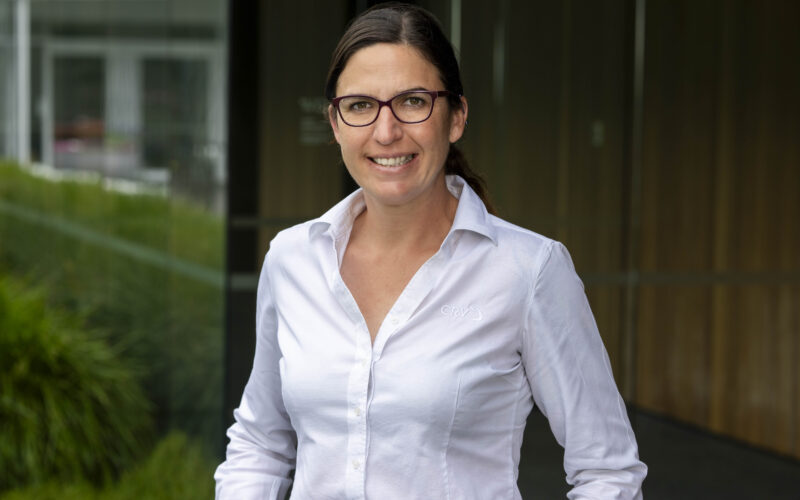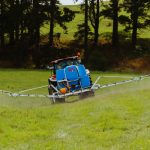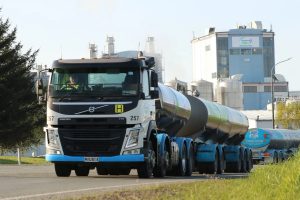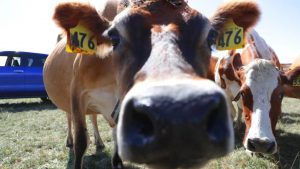
By Julia Baynes, a veterinarian, is national sales manager for CRV
In dairy farming, herd fertility reigns supreme. It’s the lifeblood of a successful operation, directly impacting genetic gain and farmer profitability, and reducing environmental impact by breeding cows that last longer in the herd.
Yet, despite the plethora of advances in reproductive technologies and management practices, the national average six-week in-calf rate has stagnated at around 66% for the past seven years, according to New Zealand Dairy Statistics 2022/23.
Fonterra’s commitment to reducing greenhouse gas emissions and protecting international market access has put the spotlight back on reproductive performance.
The key to achieving the 30% emissions reduction by 2030 is moving the dial as quickly as possible towards our industry target of a 78% six-week in-calf rate.
Doing so will result in more days in milk and increased per cow production, while reducing the GHG emissions per kgMS. It reinforces the urgency of our situation and reminds us that complacency is not an option.
This season’s pregnancy scanning results are in. The NZ Society of Dairy Cattle Veterinarians has reported a 4% increase in the six-week in-calf rate this season in the North Waikato region and a 2% decrease in the not-in-calf rate.
With repro results across the country looking more favourable, dairy farmers have reason to celebrate.
Or do they? Let’s not mistake progress for success. We cannot afford to rest on our laurels when the trajectory of our national herd fertility remains disappointingly flat.
One solution that is already available to dairy farmers for enhancing fertility is sexed semen, frozen or fresh. Published international research on pasture-based operations shows that there is no significant difference between the performance of both options available to farmers. At the end of the day, that gives farmers more choice.
For herds with good fertility management, using sexed semen from the best sires in the highest genetic merit cows is the best and fastest way to lift herd performance and get replacement heifers from your best cows.
“Good fertility management” is the operative phrase here. The success of sexed semen is hugely dependent on managing all the variables well, including semen quality, herd nutrition, body condition at calving and mating, heat detection, identifying your best cows and AB.
It’s a balancing act but failing to get all your ducks in a row won’t yield the best return on your sexed semen investment.
The high cost of sexed semen has historically posed significant barriers to widespread adoption. Farmers rightly demand value for their investment.
The onus falls on us, as providers, to make quality sexed semen more accessible and cost-effective at a time when farmers need to chase better replacement heifers.
By offering tailored packages and providing comprehensive support, we can help farmers leverage this valuable tool effectively.
The discussion needs to stretch beyond cow fertility – the bull also has a significant part to play. There are two fertility aspects to consider – the bull’s fertility breeding value and semen fertility. These are not the same thing.
We need to make sure farmers have access to the right advice and expertise to help them make informed decisions.
If we want to lift our fertility game, we also need to take learnings from conventional and sexed options that are available offshore. Heterospermic products (three sires in one straw) is a solution that has been successfully used overseas to increase conception rates.
It’s a bit like a running race, with different competitors moving at different speeds. This increases the viable lifetime of the semen inside the cow and delivers more pregnancies as a result.
Education is another challenge in our quest for improved fertility. Many farmers have dabbled in reproductive technologies but not seen the desired result due to inadequate knowledge and support.
Working alongside their trusted on-farm advisers, we need to equip them with the skills and resources to optimise their herd’s reproductive performance.
From heat detection aids to tailored nutrition plans, we must empower farmers to make informed decisions that yield tangible results. Maximising value from data will also be crucial for benchmarking performance and identifying areas for improvement.
Our fixation on empty rates as a measure of reproductive performance also needs to change. We need to shift our focus to the six-week in-calf rate as the true measure of success.
This shift reflects a deeper understanding of profitability and productivity within the dairy industry. It’s not merely about reducing culls; it’s about maximising milk production and breeding choices through timely conception.
At its core, averting a herd fertility crisis lies in proactive herd management practices. From meticulous dry-off plans to targeted nutrition strategies, every decision today shapes tomorrow’s reproductive outcomes.
But it shouldn’t all rest of farmers’ shoulders. We need to work together as a wider industry to support farmers and take collective action. If we managed dairy cows like we do beef cows in NZ and they were properly conditioned, our reproductive stats would look a whole lot better than they do now.
Pasture covers across most regions are thriving, and with favourable weather conditions, there couldn’t be a better opportunity to set the stage for next season’s reproductive success.
But this success will depend on decisions made now. Make sure cows head into mating in peak condition to maximise their fertility potential.
However, it’s crucial not to overextend the herd just because of the surplus feed available. The repercussions will only hinder our progress. And that is not an option.
You can now read the most important #news on #eDairyNews #Whatsapp channels!!!
🇺🇸 eDairy News INGLÊS: https://whatsapp.com/channel/0029VaKsjzGDTkJyIN6hcP1K
























